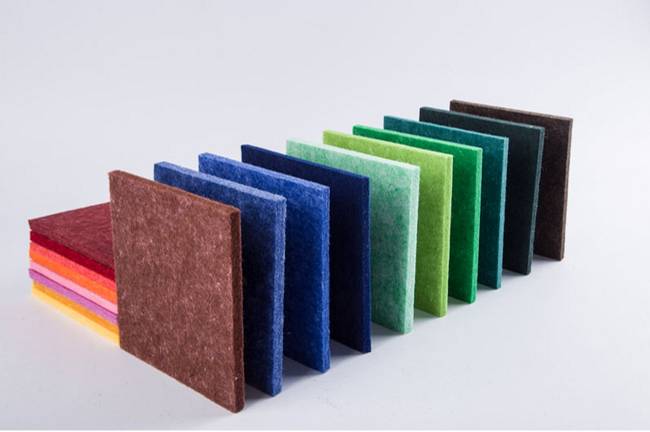Why is the earth so quiet on a snowy night? In classrooms, meeting rooms or music rooms we often see acoustic panels on the walls, the purpose of which is to isolate the sound so that people outside are not disturbed. The polyester insulation acoustic panels have many small holes on their surface, and when sound enters the holes, it is reflected haphazardly in the inner walls, which are structured somewhat like a sponge, until most of the energy of the sound waves has been consumed and turned into heat, achieving the effect of sound insulation.
When it snows, the ground, buildings and trees are often covered with a layer of snow. Unlike ice, snow is not a hard solid, but rather a sparse aggregation of snowflakes containing many small voids, somewhat like the structure inside an acoustic panel. These voids have a sound-absorbing effect on sound waves, especially at frequencies above 600 Hz. This is the reason why the earth is so quiet on snowy nights.
The principle of sound absorption is to leave a channel for the sound to enter (a channel made up of countless tiny holes stretched together, or countless tiny gaps formed by countless fibres crossed together), but once the sound is inside it cannot come out, as the channel is too messy and long, the sound bores in and out and crashes left and right, gradually consuming energy in the process and playing a role in sound absorption.

All things with long and disorganised channels can be used for sound absorption, such as cotton, fibre, cotton, sponges and carpets; but things like ordinary foam, egg cartons and wooden boards are basically non-absorbent.
In addition, a needle-like surface (like a bundle of many needles thus forming a "flat surface") is the best sound-absorbing material in theory. This surface absorbs sound (and light) like a black hole, which is the "acoustic tip split" used in anechoic chambers. However, this method is expensive and the studios and HIFI studios do not need such complete absorption, so the previous material is used.
It is important to remember that different frequencies of sound are absorbed in different ways. High frequency sounds have short wavelengths and can be absorbed easily, while low frequency sounds have long wavelengths and can easily penetrate obstacles. With low frequency sound, it is not only difficult to soundproof, but also to absorb. Instead of crashing around in a jumble of tiny passages as high frequency sounds do, it will easily go around. But if you thicken the sound absorbing material to a certain extent, you can absorb low frequencies above 130Hz.